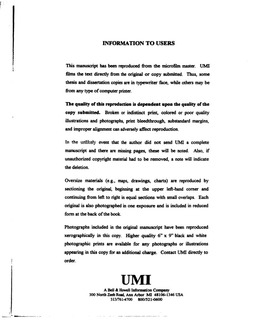| dc.contributor.advisor | Horrell, James F., | en_US |
| dc.contributor.author | Johnson, Arnell D. | en_US |
| dc.date.accessioned | 2013-08-16T12:29:57Z | |
| dc.date.available | 2013-08-16T12:29:57Z | |
| dc.date.issued | 1998 | en_US |
| dc.identifier.uri | https://hdl.handle.net/11244/5594 | |
| dc.description.abstract | In Part One of this dissertation, the Chambers, Carleton, and McEnally (CCM) model is reexamined by two separate empirical designs. In the first, the CCM quarterly data test is replicated with a larger sample and with the Fong and Vasicek (1984) M$\sp2$ minimization objective function. In the second design, Monte Carlo sampling is employed to test over five year holding periods. Five separate Monte Carlo samples are evaluated. While the quarterly data test suggests that the duration vector model does not significantly outperform the optimally selected single factor duration model, the Monte Carlo tests are consistent in their support of a two factor duration vector with D1 and D2. The tests also show that duration vector factors D3 and beyond are not warranted. This is not consistent with the CCM (1988) claim that five to seven factors are optimal. | en_US |
| dc.description.abstract | The concept of immunization as a vehicle for managing interest rate risk in bond portfolios has developed heuristically over time. It is a risk hedging procedure whose appeal is due to its simplicity and ease of application. Simple single factor duration models, however, have fallen short of expectations in empirical tests. Consequently, more complex multiple factor and stochastic models have been advanced as superior immunization alternatives. Most of these models lack appeal either because of their complexity or because they, too, have fallen short in empirical tests. A notable exception is the multiple factor duration vector model by Chambers, Carleton, and McEnally (1988). Reexamination of that study is the primary focus of this dissertation. In addition, the relative efficacy of alternative objective functions for selecting single factor duration portfolios is also examined. | en_US |
| dc.description.abstract | In Part Two, the minimize M$\sp2$ objective function is examined against five alternative strategies by the Monte Carlo sampling design. Again, five independent samples are evaluated. The results clearly support this objective function as optimal in single factor immunization. | en_US |
| dc.format.extent | ix, 158 leaves ; | en_US |
| dc.subject | Bonds. | en_US |
| dc.subject | Portfolio management Mathematical models. | en_US |
| dc.subject | Economics, Finance. | en_US |
| dc.title | Immunization, stochastic process risk, and optimal objective functions: Reexamination of the duration vector model with Monte Carlo sampling. | en_US |
| dc.type | Thesis | en_US |
| dc.thesis.degree | Ph.D. | en_US |
| dc.thesis.degreeDiscipline | Michael F. Price College of Business | en_US |
| dc.note | Source: Dissertation Abstracts International, Volume: 58-12, Section: A, page: 4749. | en_US |
| dc.note | Adviser: James F. Horrell. | en_US |
| ou.identifier | (UMI)AAI9817726 | en_US |
| ou.group | Michael F. Price College of Business | |
